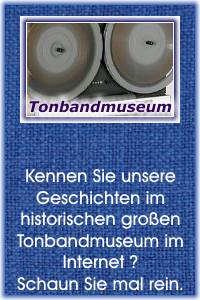Erläuterungen zu diesen 1948er US-AUDIO Seiten
Die hier stehenden amerikanischen Artikel aus 1948 (aus der US-AUDIO) sind teilweise sehr gewöhnungsbedürftig, weil sie erstens aus einer längst vergangenen Zeit stammen und zweitens, weil dort in den USA ganz "anders" gedacht wurde als bei uns in Old Germany oder in Europa.
Vergleichbar mit unseren deutschen Hifi-Magazinen etwa ab 1962 ist jedoch, daß auch diese Zeitschrift ihre Anzeigen- Kunden und -Leser (be- oder ab- ?) werben mußte.
Die Ausgaben der US-AUDIO von 1947 bis 1958 liegen in teilweise ganz miserablen PDF-Dateien vor, in denen die Reihenfolge der Seiten teils völlig wirr ist. Der Aufwande, einen einzigen Artikel komlett zusammenzubauen, ist daher erheblich. Die Fotos sind so gräuselig schlecht, daß sie nur in Ausnahmefällen eingebaut werden.
.
EDITOR'S REPORT - "MAKING CRYSTALS AMPLIFY"
(zum ersten mal etwas gang ganz Frühes über Transistoren)
• LAST MONTH we had just put our issue peacefully to bed when Bell Labs announced the "Transistor", a germanium crystal amplifier/oscillator which we consider one of the most important developments in this field during the past decade.
Those of us who have played around with crystal detectors have often wondered if some means of making them oscillate or amplify would ever be discovered. And many of us did a little unsuccessful experimenting on our own hook. But not until Drs. John Bardeen and Walter Brattain of Bell Labs learned the secret, could anyone do the trick.
In view of the importance of this new development, it behooved your editor to publish as quickly as possible technical data on this device. We could break it into the July issue by pulling out our editorial and a column of letters, but we found that Bell Labs wouldn't release any data on the theory of operation, and very little on the design of the device.
But with such technical details as they did supply, Winston Wells got busy in his laboratory and built the unit described last month, working night and day over the long Fourth-of-July weekend. He produced a unit which had somewhat greater power output than the "Transistor", at decreased gain. Above all, he worked out a theory of operation, and plotted characteristic curves, which will guide others who wish to experiment along these lines. Thus, we are able to present to you information on this new development that can be obtained nowhere else at the present time.
In the current issue, S. Young White has taken over the continuation of this series of articles on the "germanium crystal amplifier", with practical working models and construction details in this issue.
Because of the minute spacing (.002 to .005 inch) between the crystal contacts, much of White's work had to be done under a medium-power microscope. A jeweler's loupe wasn't quite strong enough.
Future articles on this device will deal with its applications. There are many jobs which it can do better than electron tubes, others where it is far inferior. It consumes power in its input circuit, which has low impedance (100 to 1000 ohms) at all frequencies, and its output power is normally of the order of 35 milliwatts, at impedances of the order of 10,000 to 15,000 ohms. There are enormous variations in impedances between units, which indicates that one of the first steps in the commercial development of the new device will be careful control of the amount and distribution of impurities in the raw germanium crystal, as well as in the spacing of the contacts, etc. But the field is wide open for the experimenter, as well as for research workers in communications and nuclear physics.
.
- Anmerkung in 2019 : Der Redakteur Mr. Potts hat das Potential des "Transistors" ganz erstaunlich früh erkannt und beschrieben. Wir schreiben ja erst Mitte 1948 !! Für einen nicht Halbleiter-Menschen ist das absolut ungewöhnlich. Dieser Mr. Potts hatte wirklich Intellekt-Potential und er hatte kreative Visionen.
.
NAVY NEEDS ENGINEERS
• We have just received a letter from the Chief of the employment operations division of the Navy Department requesting that we bring to the attention of our readers information regarding position vacancies in Washington. Engineers and scientists in practically all fields are needed, as well as mathematicians and physicists. Salaries range up to $10,330 per annum. (Anmerkung : Das war damals 1948 sehr viel Geld und könnte heute mit 150.000 Euro Jahregage verglichen werden.)
Applications (Bewerbungen) should be made on Standard Form 57, available at any first or second-class Post Office, and should be mailed to Code 612, Room 1213, Main Navy Building, 17th and Constitution Ave., Washington, D. C.
(Aber Achtung, das galt nur 1948, heute bestimmt nicht mehr.)
.
WITH OUR AUTHORS
• A complete series of articles on the design and applications of acoustical test equipment will start soon. Had lunch with J. A. Maurer, sound-on-film authority, who is also preparing a number of articles, on his specialty. Now that the tone-warning device for telephone recording has been approved, E. W. Savage will continue his series on telephone recording. Dr. W.W. Wetzel of Minnesota Mining (3M) has three interesting stories on magnetic recording, including a special method of making duplicates from recording tape. McProud is working on an extraordinary preamplifier, to be built into a mike, using the new germanium crystal amplifier units.
J.H. Potts.

